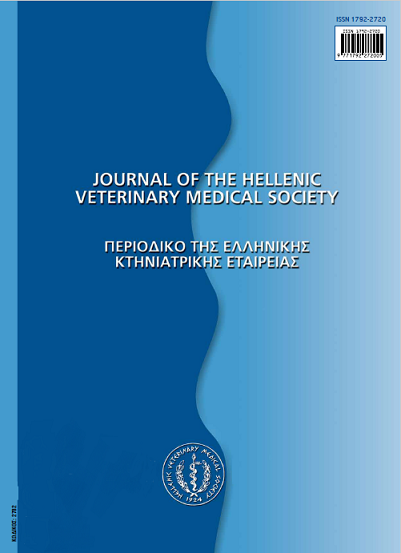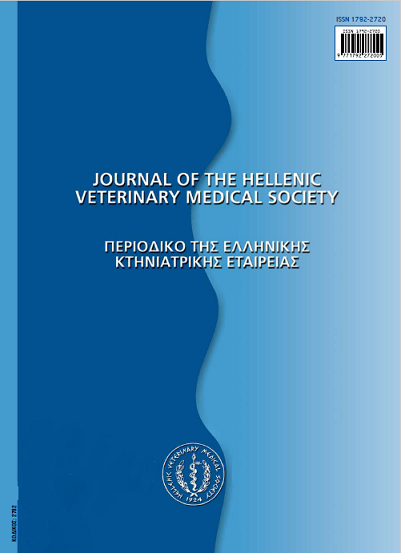Χρήση μεσόφιλων οξυγαλακτικών βακτηρίων στην παρασκευή του τυριού Φέτα

Περίληψη
Μελετήθηκε η χρήση μεσόφιλων οξυγαλακτικών βακτηρίων στην παρασκευή τυριού Φέτα. Πέντε επιλεγμένα στελέχη μεσόφιλων οξυγαλακτικών βακτηρίων, που απομονώθηκαν από ώριμα τυριά άλμης Φέτας και Τελεμέ (2 στελέχη Lactobacillus plantarum, ένα στέλεχος Lb. paracasei subsp. paracasein ένα στέλεχος Lb. brevis και ένα στέλεχος Lactococcus lactis subsp. lactis), χρησιμοποιήθηκαν σε 7 διαφορετικούς συνδυασμούς για την Παρασκευή τυριού Φέτα. Για καθέναν από τους συνδυασμούς έγιναν 4 τυροκομήσεις και μελετήθηκε η επίδραση των μεσόφιλων αυτών οξυγαλακτικών καλλιεργειών στα μικροβιολογικά, χημικά και οργανοληπτικά χαρακτηριστικά της Φέτας που παρασκευάστηκε. Οι λακτοβάκιλλοι και οι λακτόκοκκοι εμφάνισαν πολύ υψηλούς πληθυσμούς (μέση λογαριθμική τιμή >7,00 log10cfu/g) σε όλη τη διάρκεια του πειραματισμού, σε όλους τους συνδυασμούς, πλην του συνδυασμού μάρτυρα F8 (Lb. delbrueckii subsp. bulgaricus I Str.thermophilus) στον οποίο η μέση λογαριθμική τιμή του πληθυσμού ήταν περίπου 6,00 log10cfu/g. Στις υπόλοιπες μικροβιακές ομάδες που μελετήθηκαν (κολοβακτηριοειδή, σταφυλόκοκκοι, χλωρίδα επιμόλυνσης, ζύμες και μύκητες, πρωτεολυτικά και λιπολυτικά βακτήρια) διαπιστώθηκε σταδιακή μείωση του πληθυσμού τους με την πρόοδο της ωρίμασης, πλην των ζυμών οι οποίες αυξήθηκαν. Το pH των τυριών μειώθηκε σύντομα περίπου στο 4,5 εντός 3 έως 4 ημερών. Οι λοιπές χημικές παράμετροι (υγρασία, λίπος, NaCl) σταθεροποιήθηκαν μεταξύ 15ης και 30ης ημέρας ωρίμασης. Το διαλυτό σε 12% TCA άζωτο και ο βαθμός λιπόλυσης (ADV) αυξάνονταν βαθμιαία με την πρόοδο της ωρίμασης. Ως προς τα οργανοληπτικά χαρακτηριστικά, η ομάδα δοκιμαστών, που αξιολόγησε τα τυριά την 60η ημέρα ωρίμασης, έδωσε την υψηλότερη βαθμολογία στο τυρί που παρασκευάστηκε με το συνδυασμό Lb. plantarum /Le. lactis subsp. lactis και τη χαμηλότερη βαθμολογία στο τυρί του συνδυασμού Lb. delbrueckii subsp. bulgaricus I Str.thermophilus. Πολύ καλή βαθμολογία έλαβαν και τα τυριά με τους συνδυασμούς μεσόφιλων βακτηρίων Lb. brevis / Le. lactis subsp.lactisή Lb. paracaseisubsp. paracasei /Le. lactissubsp. lactis και τα τυριά που παρασκευάστηκαν με συνδυασμούς θερμόφιλων και μεσόφιλων στελεχών.
Λεπτομέρειες άρθρου
- Πώς να δημιουργήσετε Αναφορές
-
KARAGEORGIS (Σ.Β. ΚΑΡΑΓΕΩΡΓΗΣ) S. B., PAPAGEORGIOU (Δ.Κ. ΠΑΠΑΓΕΩΡΓΙΟΥ) D. K., MANTIS (Α.Ι. ΜΑΝΤΗΣ) A. I., & GEORGAKIS (Σ.Α ΓΕΩΡΓΑΚΗΣ) S. A. (2017). Χρήση μεσόφιλων οξυγαλακτικών βακτηρίων στην παρασκευή του τυριού Φέτα. Περιοδικό της Ελληνικής Κτηνιατρικής Εταιρείας, 56(3), 197–218. https://doi.org/10.12681/jhvms.15081
- Τεύχος
- Τόμ. 56 Αρ. 3 (2005)
- Ενότητα
- Research Articles
Οι συγγραφείς των άρθρων που δημοσιεύονται στο περιοδικό διατηρούν τα δικαιώματα πνευματικής ιδιοκτησίας επί των άρθρων τους, δίνοντας στο περιοδικό το δικαίωμα της πρώτης δημοσίευσης.
Άρθρα που δημοσιεύονται στο περιοδικό διατίθενται με άδεια Creative Commons 4.0 Non Commercial και σύμφωνα με την άδεια μπορούν να χρησιμοποιούνται ελεύθερα, με αναφορά στο/στη συγγραφέα και στην πρώτη δημοσίευση για μη κερδοσκοπικούς σκοπούς.
Οι συγγραφείς μπορούν να καταθέσουν το άρθρο σε ιδρυματικό ή άλλο αποθετήριο ή/και να το δημοσιεύσουν σε άλλη έκδοση, με υποχρεωτική την αναφορά πρώτης δημοσίευσης στο J Hellenic Vet Med Soc
Οι συγγραφείς ενθαρρύνονται να καταθέσουν σε αποθετήριο ή να δημοσιεύσουν την εργασία τους στο διαδίκτυο πριν ή κατά τη διαδικασία υποβολής και αξιολόγησής της.




